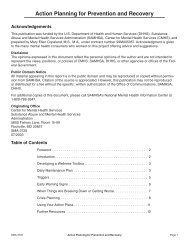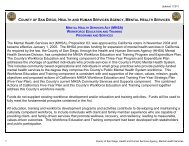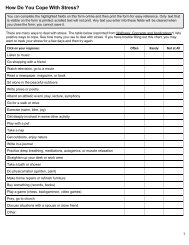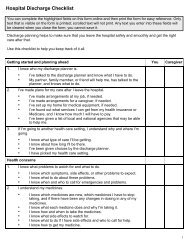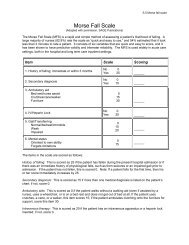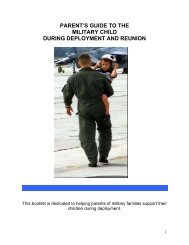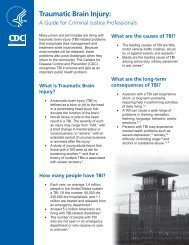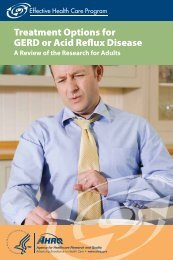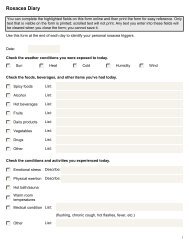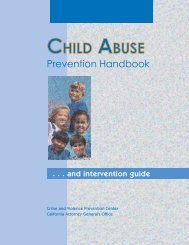A Day in the Life of Adult Protective Services - Final Report ... - CWDA
A Day in the Life of Adult Protective Services - Final Report ... - CWDA
A Day in the Life of Adult Protective Services - Final Report ... - CWDA
You also want an ePaper? Increase the reach of your titles
YUMPU automatically turns print PDFs into web optimized ePapers that Google loves.
Background Information<br />
<strong>Adult</strong> Abuse<br />
Investigations<br />
<strong>in</strong> California<br />
The <strong>Adult</strong> <strong>Protective</strong> <strong>Services</strong> programs <strong>in</strong> each <strong>of</strong> California’s 58 counties<br />
handle <strong>the</strong> <strong>in</strong>vestigation <strong>of</strong> allegations <strong>of</strong> abuse and neglect <strong>of</strong> elder and<br />
dependent adults liv<strong>in</strong>g <strong>in</strong> <strong>the</strong> community. Abuse reports are accepted 24<br />
hours a day, seven days a week.<br />
APS Clients<br />
APS workers handle abuse allegations about <strong>the</strong> follow<strong>in</strong>g types <strong>of</strong> clients:<br />
Elder: Any person resid<strong>in</strong>g <strong>in</strong> this state, 65 years <strong>of</strong> age or older.<br />
Dependent adult: Any person between <strong>the</strong> ages <strong>of</strong> 18 and 64 years who<br />
resides <strong>in</strong> California and who has physical or mental limitations that restrict<br />
his or her ability to carry out normal activities or to protect his or her rights,<br />
<strong>in</strong>clud<strong>in</strong>g, but not limited to, persons who have physical or developmental<br />
disabilities, or whose physical or mental abilities have dim<strong>in</strong>ished because <strong>of</strong><br />
age, <strong>in</strong>clud<strong>in</strong>g any person between <strong>the</strong> ages <strong>of</strong> 18 and 64 years who is<br />
admitted as an <strong>in</strong>patient to a 24-hour health facility, as def<strong>in</strong>ed <strong>in</strong> Sections<br />
1250, 1250.2, and 1250.3 <strong>of</strong> <strong>the</strong> Health and Safety Code.<br />
California’s<br />
Abuse<br />
Def<strong>in</strong>itions<br />
California recognizes <strong>the</strong> follow<strong>in</strong>g types <strong>of</strong> abuse:<br />
• Abandonment<br />
• Abduction<br />
• F<strong>in</strong>ancial Abuse<br />
• Isolation<br />
• Mental Suffer<strong>in</strong>g<br />
• Neglect<br />
• Physical Abuse, <strong>in</strong>clud<strong>in</strong>g Sexual Abuse<br />
• Self Neglect<br />
The legal def<strong>in</strong>ition for each type <strong>of</strong> abuse can be found at:<br />
http://www.leg<strong>in</strong>fo.ca.gov, California Law, Welfare and Institutions Code,<br />
Sections 15610 to 15610.55.<br />
California’s<br />
Regulations<br />
Regulations for <strong>the</strong> adm<strong>in</strong>istration <strong>of</strong> California’s APS program were<br />
developed by <strong>the</strong> California Department <strong>of</strong> Social <strong>Services</strong> and are available<br />
at http://www.dss.cahwnet.gov/ord/CDSSManual_240.htm; <strong>Adult</strong> <strong>Protective</strong><br />
<strong>Services</strong> Program Manual, Division 33, Chapter 33-100 through 33-800.<br />
7



